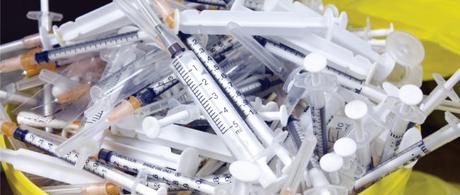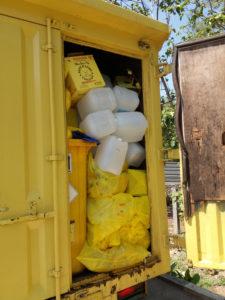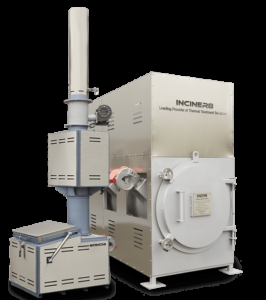
What is biomedical waste?
Biomedical waste covers a wide range of used medical equipment. These can potentially be infectious so they need to be disposed of responsibly. Some common and well known biomedical waste items are syringes and needles, IV sets, Urine bags, culture dishes and more. These items simply can't be re-used in any manner once they've been administered initially. Biomedical waste can be in liquid or solid form such as discarded blood or extracted bodily fluids.
This waste is a by-product of medical processes conducted in hospitals - items are used in operations, during on-going treatment and for diagnosing conditions.Responsible waste management when it comes to biomedical products is in the general principles of hygiene and sanitation. Initially when using the products, good housekeeping prevents spread of disease from the products before they get to the stage where they need to be disposed of and incinerated.
The 4 categories that medical waste falls under are General, Infectious, Hazardous and Radioactive. Biomedical waste is incinerated in either a hospital incinerator or through industry standard biomedical waste incinerators. These are complex machines that were designed to effectively and responsibly dispose of these materials in a manner that would prevent any spread of disease.
 Why does it need to be incinerated?
Why does it need to be incinerated?
In simple terms, biomedical waste essentially is classed as a biohazard because of the potential of the spread of disease. Depending on what category of biomedical waste the item falls under it could potentially be spreading radioactive waste such as the by-products of the chemotherapy process. If animals get hold of biomedical materials left out in the open this could then be spread to humans. With the number of people living in dense area, particularly in cities this could easily spiral out of control and become a major incident that would be difficult to manage for the authorities.
The responsibility of managing biomedical waste falls to the hospitals that produce the waste and they have strict processes in place to separate different types of waste. This is because there are different types of waste which need to be treated differently; for example, waste from processes such as chemotherapy will need to be separated from items such as needles and scalpels.
Where should be using this technology?
The process is required in any hospital including Military hospitals however, recent studies have found that the system of disposal found in a typical field hospital is often far from ideal and below what you'd find in a typical hospital. This can sometimes be down to a lack of resources or that the hospital may be located in a war zone.
However, sometimes it is because the processes haven't been stuck to rigidly enough or implemented properly. INCINER8 have started to change this through their provision of medical waste solutions to countries across Africa and Asia. We work closely with military organisations ensuring their waste solutions are up to scratch and protecting the local environment where they operate.

How is it disposed of responsibly?
Essentially the process of incineration consists of burning the biomedical waste. There are alternative processes to dispose of waste: disinfection, chemicals and autoclaving however, many authorities recommend and sometimes require by law that using incinerators is the only way to dispose of bio waste.
Medical incinerators and biomedical incineration devices are complex and designed to safely dispose of these materials. Initially the waste is put into primary chamber that reaches temperatures of +850°C. The gases are then processed through a secondary chamber that retains the gases for over 2 seconds. It is then passed through a number of pollution control systems. This process ensures that no harmful gases are being ejected at the end of the process into the environment.
Biomedical waste and hospital incinerators are absolutely vital for the responsible management and disposal of biomedical waste. The dangerous and lethal nature of these products mean we need to ensure that the processes of incinerating these materials and not resorting to a quicker, more harmful methods of disposal are adhered to.
Advancements in medical sciences are saving more lives than ever and treating conditions with more accuracy than before. This would all be in vain if the biomedical waste wasn't disposed of properly. Lack of adherence to these procedures would mean the spread of disease would become rampant and would result in more admissions to hospital flooding a system that is already understaffed and under pressure.
It is essential that the process of incinerating biomedical waste isn't harmful to the environment and doesn't produce harmful gases.
Currently the processes handled by hospital incinerators and biomedical incinerators in general do effectively manage this waste responsibly. No by-products are left at the end that are released into the atmosphere or have no means of disposal.
To find out how INCINER8 can help your organisation in disposing of medical and biomedical waste please read our medical incinerators page for more information.

